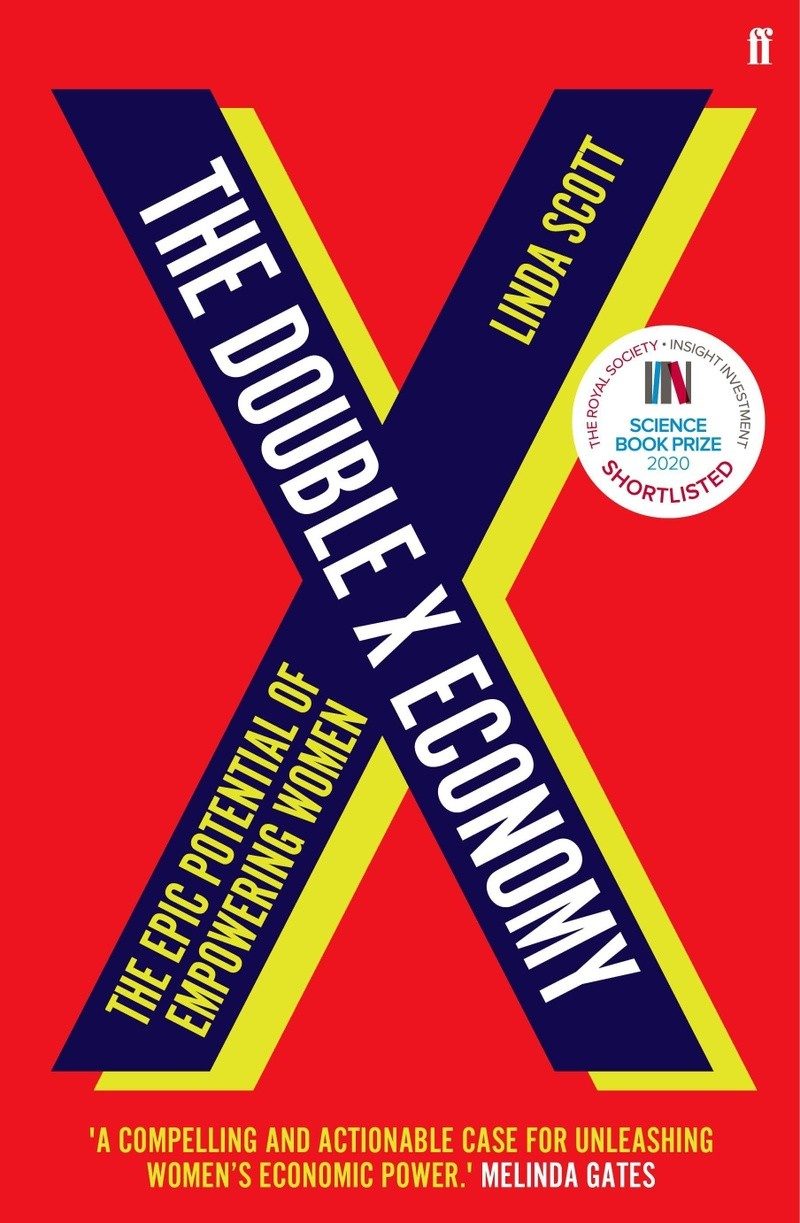The more women work, the wealthier a country is. Economist Linda Scott substantiates this in her new bestseller “The Double X Economy.” And she is convinced: financial independence is the key to female self-determination.
Women not only make up half of humanity, they are also responsible for half of the world’s gross domestic product and food supply. And yet, women are still disadvantaged in today’s global economy. Depending on the region of the world, this discrimination ranges from a gender pay gap to the expropriation of goods and their own bodies. The outcome: unequal pay and unequal access to economic participation cost the global economy USD 160 trillion a year.
This is what Linda Scott writes in her life’s work “The Double X Economy,” in which she makes the case for the global economic empowerment of women. The renowned Oxford economist is convinced: “Financial independence is the key to female self-determination.” And she says: “Equality is not a luxury project, but the basis of our prosperity. If we empower women economically, we all win.” In this interview, Linda Scott mentions eight proposals for the economic empowerment of women:

1. More effective measures for equal pay
The developed countries enacted equal pay laws in the 1970s and 1980s, but consistently failed to uphold the statutes and put the burden of enforcement on individual women. But women are highly unlikely to win if they choose to press a case in court because of the absence of political support from the judiciary or weak laws and the financial risk of failure puts such an action beyond the means of most. Employers, therefore, can afford to take the risk of paying women less because they probably will face no consequences. But ultimately, it’s the governments who are at fault and they should be held accountable.
2. The importance of universal childcare
Across the developed nations, women contribute about 40 percent of total GDP. And yet those societies make it hard for female citizens to work. Since the biggest hindrance to women’s economic participation is the burden of childcare, building a system of universal, high-quality care is just as much an investment in economic infrastructure as building roads and airports. Because such a system would make it possible for more women to work more hours, it is certain that adding infrastructural childcare would stimulate significant growth, thus adding to tax revenue. The increase would be more than enough to pay for the investment.
3. Establish a social safety net for non-working mothers
A woman who gives up her economic independence to rely solely on the male head of household throws away the economic value of her education, makes herself much more vulnerable to a future of poverty, and opens herself up to a higher likelihood of domestic violence. Research shows conclusively that children are far better off when their mothers work. If, despite these facts, we truly believe it’s better for families if women stay home, then we should be willing to compensate stay-at-home women for their sacrifice and service.

4. The home office trap
Like most people, I have long thought that working from home would solve many problems for mothers who wish to keep up their careers. However, the COVID experience changed my mind. When the schools shut down here, I was put in charge of the 24/7 care of my four-year-old granddaughter so that my daughter, who is an ER doctor, could continue to work without exposing us to the virus. Precious little time was left for me to answer email, never mind give thoughtful attention to a complex project. And, frankly, I was so tired that I wanted to use any spare moment to sleep. It was painfully evident that expecting a woman to take care of home and children while maintaining performance at a full-time job is little more than a cruel joke. Many stories like mine appeared in the press. Surely, after this pandemic, we will have disabused ourselves of the notion that remote work will solve the economic gender gap.
5. More mixed-gender teams
Mixed-gender teams are more successful. Why? The investment tendencies in males and females complement each other. Research shows, that women are more attuned to the long-term impact and benefits of an investment, rather than the short-term payoffs, that the markets have traditionally chased. Gender-balanced work environments also keep unwanted brotherhood pressure from distorting decisions. There is a positive connection between a company’s gender performance and its financial value. For example, in 2019 the Bloomberg gender-equality Index for financial companies increasingly outperformed the Bloomberg Financial Service Indexes as well as the MSCI Financial Indexes. In 2019, it was 50 percent higher than the other two. It shows: gender-equal companies are simply better investments.
6. More business loans for women
In the US, as in most countries, women are under-represented in business ownership. Women own about a third of all American businesses, but they get less than 5 percent of conventional business loans. As a direct result of unequal access to capital, women-owned businesses represent only 16 percent of employers and only 10 percent of high-growth firms. That gap means fewer jobs and lower tax revenue than there could be if the banks (and other investors) weren’t driven by gender-biased investment criteria. A big step toward change would be to allow banks to collect data on the gender makeup of their customer base and then require public reporting of their decisions by sex.
7. More land ownership for women
Women’s limited control over capital is rooted in a worldwide structural exclusion. For 4000 years, females have been forbidden, usually by law, from owning land. This exclusion has been so powerful that men now own more than 80 per cent of the world’s surface. We can say that unequal land access reduces GDP by about 3-4 percent in agricultural economies, which perpetuates poverty and contributes significantly to food insecurity. The UN estimates that if we evened the playing field for women in land ownership, we could feed 150 million of the world’s chronically hungry.
8. Use your consumption power! (or: The “80 percent Christmas” strategy)
The one place in the world economy where women have near-total control is consumption. In the Western nations, women make upwards of 70 percent of consumer purchasing decisions. Their power is especially visible during the Christmas season, where the holiday preparations and gift purchases are virtually all under the control of females. Western economies rely significantly on holiday sales as a source of growth. So, what I propose is that women in those countries band together to reduce their spending by 20 percent over the past holiday season (hence, the “80 percent Christmas”) and to do so every year until the gender pay gap is closed. I proposed that the campaign would begin with Christmas in the Western countries and then roll around the world through other major cultural holidays like the Lunar New Year, Diwali, Ramadan, and Hanukkah.

Linda Scott
Linda Scott is Professor Emeritus of Entrepreneurship and Innovation at the University of Oxford. She has twice been nominated one of the Top 25 Global Thinkers by Prospect Magazine for the decades she has spent researching the economic role of women around the world. In addition to her scientific work, she advises UN panels, think tanks and international companies. She completed her life’s work “The Double X Economy” (MacMillan) in 2020. The book has already been translated into 12 languages.





